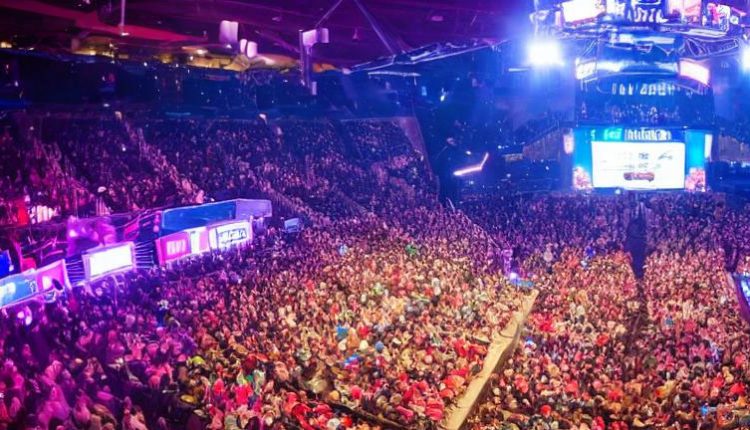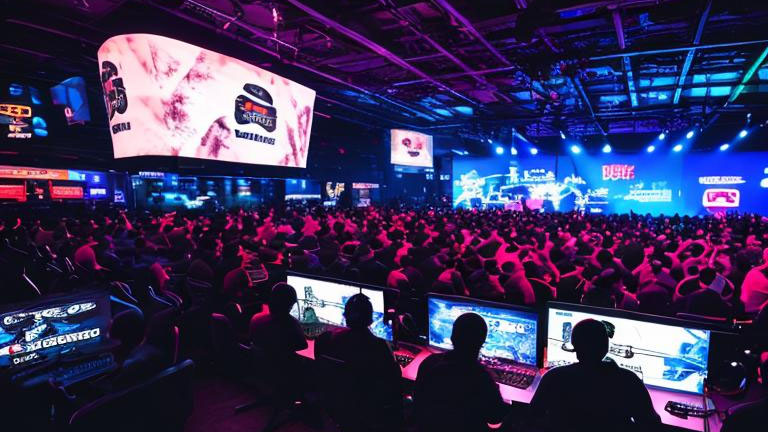How web3 can build stronger communities for esports

Ramona Ciocea is the head of business development at web3 service provider Protokol.
Once a niche market, esports are now considered to be fully immersive, ‘phygital’ (hybrid online and real-world) spectator events, where fans and players engage in real time. According to Statista, by 2025 there are expected to be more than 640 million viewers of esports globally. Now, the similarities to traditional sports in terms of revenue, reach and popularity has attracted the attention of lucrative sponsors.
The similarities are strong enough that this year, Singapore hosted the world’s first Olympic Esports Week in June, attracting more than 20,000 attendees. With a growing number of followers and sponsorships, esports teams face pressure to maintain the hype and turn new fans into loyal advocates. But their digitally savvy fans don’t just want a digital version of a loyalty card – in a nascent, innovative industry, fan engagement will be won on a meaningful web3 loyalty experience.
Key challenges
Tailored experiences and real value for fans are vital to sustaining engagement. The esports industry relies on strong communities to support its operations and economic strategies. Maintaining the existing loyal audience can prove difficult for esports teams, as the industry constantly evolves and competition for audience share by emerging teams heats up.
The cross-border, multi-channel structure of esports results in fragmented platforms and touchpoints, which is problematic for audience tracking and data insights. To maximise existing commitment to teams, a detailed understanding of their fan patterns is required. And from a commercial perspective, low fan traceability offers potential investors limited insights for audience targeting and generating new revenue streams.

To solve these obstacles, esports teams who want to capitalise on the rising market must implement sophisticated loyalty strategies that overcome the challenge of a fractured fanbase to increase fan involvement and loyalty, as well as new financial potential for organisations.
The idea of seamless platform-agnostic user experiences probably sounds familiar – it’s the basis of the metaverse. To build the loyalty experience fans are after, esports must also look to web3.
Data-driven insights
Web3 technology is a game changer. By exploiting this cutting-edge technology, the whole esports sector stands to gain a whole new level of value for both fans and partners and sponsors. Enhanced transparency, engagement and new ways to monetize the user base are made possible by integrating blockchain technology.
Web3 enables a simple, cohesive and transparent loyalty experience, by allowing loyalty rewards to be tokenized on the blockchain.
A tokenized system is highly secure and easy to use. Instead of collecting traditional loyalty points which are not easily transferable nor manageable, users can collect loyalty tokens (which are fungible, or mutually interchangeable), or for real feats of loyalty – such as spectating every game of a season or recruiting more fans to the team supporters – they could earn exclusive NFTs. These would be sent to their secure crypto wallet registered to their unique address, regardless of which platform they were earned on.
NFTs can offer exclusive benefits and personalised assets, hence improving the overall fan experience. They can unlock access to early discounts, rewards, or special offers. What’s more, these can act as collectibles, while future engagement is also incentivised as fans complete more interactions to collect more NFTs.
But there is also an upshot for teams seeking to unlock more sponsorship and revenue opportunities, web3 technology can unlock solutions that can help teams to collect valuable and verifiable information about fan behaviour. Because of the transparent, traceable yet anonymous nature of blockchain, esports teams could utilise a web3 loyalty and engagement solution to gather and share verifiable insights about which engagement activities prove to be the most popular with users, informing strategic decisions and proving ROI for sponsors.
Permissioned parties such as sponsors can be assured that they have access to a real-time provable record of fan interactions. This could help both esports teams and their sponsors better understand the reach of their advertising, and get a more accurate gauge of how active the fanbase is. Equally, teams can analyse the pain points of these engagements and work on improving them, which can lead to an increase in fan satisfaction and loyalty that drives further value to teams, sponsors, and fans.
Subculture to worldwide phenomena
An array of opportunities for fan participation and team connection are made possible by the deployment ofwWeb3 technology, which marks a turning point in fan engagement and loyalty. Fans are rewarded for their commitment to their favourite teams by utilising more engaging web3 loyalty programs, rather than placated by confusing and out-dated loyalty point systems.
With esports right at the peak of the hype cycle, now is the time for teams to stay dynamic. To remain at the forefront of innovation and follow the momentum of demands from fans and the broader communities, technology-driven digital fan engagement strategies must be prioritised to keep fans engaged and funding flowing.
